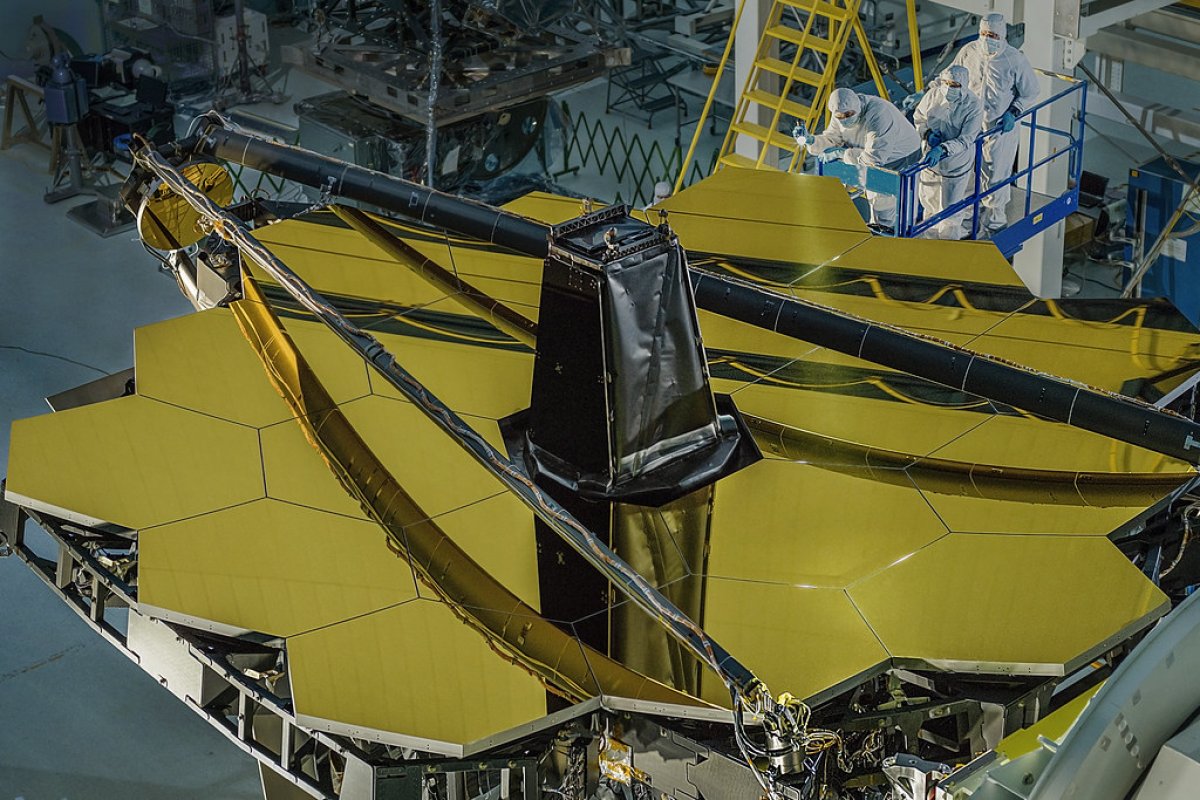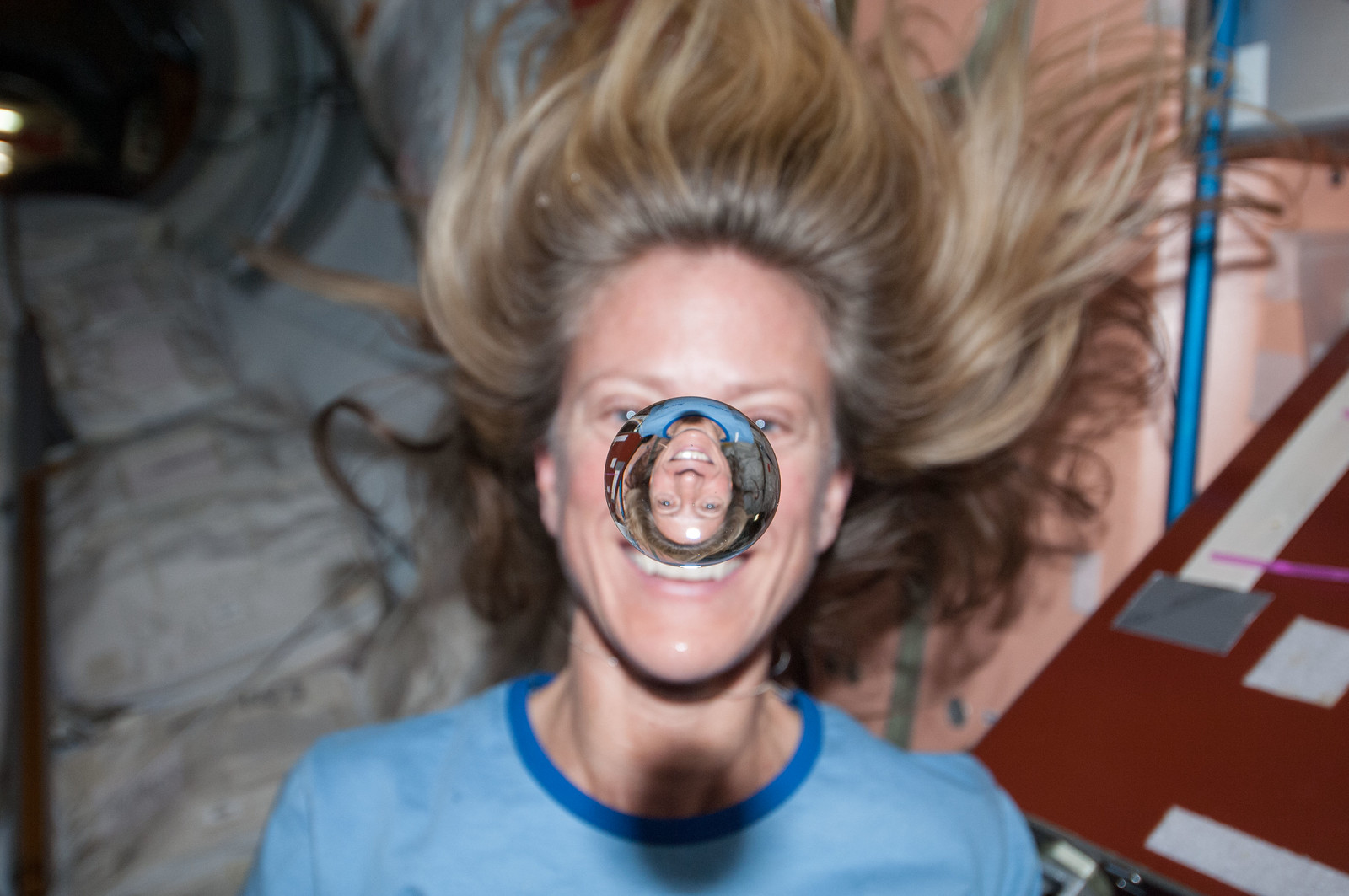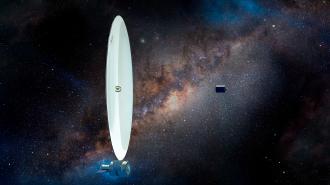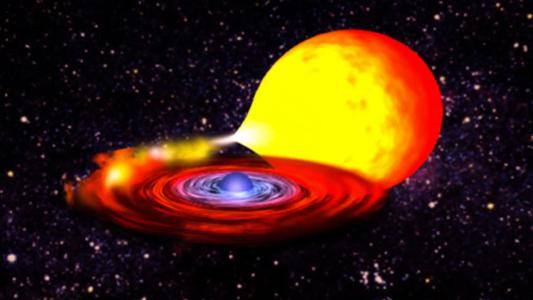Over the years, we have become incredibly good at making telescopes. Just look at the 6.5 m (21 ft 4 inch) wide James Webb Space Telescope or the aging but still great 4.5 m (14 ft) wide Hubble Space Telescope. These powerful apparatuses help us peer deep into the cosmos and unravel some of the universe’s most profound mysteries.
However, NASA recently tested a technology that could make a space telescope so large it would dwarf all that have come before. Welcome to the incredible world of liquid lenses!
The eyes in the skies: Lenses and optical mirrors are surprisingly complex creations. They need to be shaped precisely to function. We can do this easily for smaller lenses such as the ones in your glasses, as your eyes aren’t super sensitive to imperfections.
But for the massive and powerful lenses and optical mirrors in large telescopes, even the most minute imperfection is enough to render them useless. Take the Webb telescope: For its mirrors to work, it has to be so precise that if you scaled the mirror up to the same size as the US, the largest bump would be only two inches tall.
To get such a perfect shape takes years of intricate polishing, grinding, and checking. We find it incredibly difficult to create the perfect parabolic curves necessary for these optical parts. There is no one-step production method. It is a painstakingly long, arduous, and expensive process.

To make matters worse, such huge telescopes are not practical to use on Earth as our atmosphere gets in the way. This is one reason why the Hubble and Webb are in space.
However, that means these massive telescopes also need to fit into a rocket. To make the Webb’s gigantic primary mirror fit, it had to be broken up into hexagonal sections, allowing it to be folded down and fit inside a rocket. It then has to be painstakingly aligned, in space, remotely, with nanometre accuracy. Otherwise, it won’t work.
This size restriction further increases development time, costs, and the possibility of failure, thanks to the complex folding mechanics and separate mirrors that have to work as one.
Beyond gravity: NASA is working on a solution. Why not make the mirrors in space using liquid dynamics, rather than building hard lenses and mirrors on Earth?
Unlike our manufacturing methods, liquids find it easy to form perfect parabolic curves. If you look through a droplet of water just before it falls from the faucet, you can see it acting as a lens. This is due to the surface tension pulling at the droplet, forcing it into a near-perfect curved shape.
The problem is that gravity on Earth is strong enough to distort this natural parabolic-making process. We can use it to make small lenses or parabolic mirrors, but not large perfect ones.
However, it is a different story in the microgravity environment of space. Up there, it is theoretically possible to use liquids to create giant, perfect lenses or parabolic mirrors.

How?
Well, you use a liquid polymer that can be set (frozen) by UV light. An undisturbed blob of this liquid will form a perfect sphere in microgravity. If we take a blob like that and spin it, it will bulge out and form an ideal parabolic lens. Then all you need to do is blast it with UV, and you will have a solid, usable lens!
You can even modify this method and use reflective polymers or coatings to create the parabolic optical mirrors found in giant telescopes.
Using this process, it is theoretically possible to construct telescopes and other optical equipment orders of magnitude larger than the Webb in a fraction of the time and at a fraction of the cost.

Testing the theory: NASA’s Fluidic Telescope Experiment (FLUTE) was recently undertaken on the ISS to take this incredible technology from theory into practice. They attempted to create small optical lenses from free-floating polymer liquids and analyze how accurate they were.
The results aren’t published yet, but if FLUTE was successful, it’s a sign that we could build optical systems in space ten times the size of the Webb, unlocking some staggering advances.
First, giant telescopes help us understand some of the universe’s most profound mysteries. They can peer into the deep past of our universe, helping us resolve some of physics’ biggest mysteries, such as dark matter. They can even analyze the composition of exoplanets in the search for alien life.
But a liquid lens-based telescope several times the size of the Webb could see far deeper into the cosmos and at far greater levels of detail. Such a telescope could be the tool that finds new life or radically changes physics. And we may finally be able to build it without needing a trillion dollars.
We’d love to hear from you! If you have a comment about this article or if you have a tip for a future Freethink story, please email us at [email protected].






